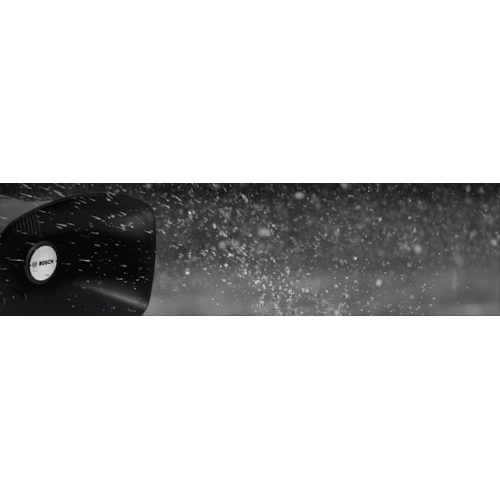
In challenging and extreme circumstances you still want to be able to have confidence in your loudspeakers.How to choose a loudspeaker that’s resistant to water and chlorine in a swimming pool? Can a loudspeaker be used on a restaurant’s patio, without it being affected by weather influences? Which loudspeaker can be used in an environment where hazardous substances are present? Various certifications exist, indicating to what degree a device is protected against outside influences. Below, we explain these certifications.
The IEC (International Electrotechnical Commission) is the world’s leading organisation that prepares and publishes international standards for all electrical, electronic and related technologies. The standards are expressed in an International Protection Rating. These IP indications consist of two digits: the first digit establishes the level of protection against intrusion of foreign bodies, the second digit the resistance against moisture intrusion. For instance, a loudspeaker with the indication IP54, is resistant to dust and splashing water.
| First digit: solids | Second digit: liquids | |
| 0 | Not protected | Not protected |
| 1 | Objects > 50mm | Dripping water |
| 2 | Objects > 12,5mm | Dripping water, device tilted at 15 degrees |
| 3 | Objects > 2,5mm | Spray proof (rain) |
| 4 | Objects > 1mm | Splash proof |
| 5 | Dust protected | Resistant against water jets |
| 6 | Dust tight | Resistant against powerful water jets |
| 7 | – | Waterproof, submersion of up to 1m depth |
| 8 | – | Waterproof, submersion of more than 1m depth |
Another certification of the IEC, is IEC 60068. This is the international standard for the environmental and mechanical testing of electrotechnical products. The digit 2, following the 60068, indicates testing has taken place under the given circumstances or with the concerning substances. The last digit in the sequence, signifies the specific situations or substances. The most common IEC indications, when it comes to loudspeakers, are the following.
ATEX (ATmosphères EXplosibles) is the name of the European Directive for controlling equipment in (potentially) explosive atmospheres. ATEX is mandatory in the EU and is more and more internationally acknowledged, in collaboration with IECEx. It is required for all products exposed to a potentially hazardous environment to be ATEX certified. ATEX loudspeakers are marked with the CE mark, the ‘Ex’ mark and the specifications for that loudspeaker. This code is composed of various elements. First, a distinction is made between the kind of explosion that can occur: gas explosions (caused by solvents, process vapors or mist) or dust explosions (such as those found in the food and wood industries). Depending on the frequency in which the gasses are present in the area, the area categories are divided in different risk zones (0, 1 or 2). Depending on the frequency, a risk level (a, b or c) is also determined. The higher the risk, the safer the loudspeaker should be. The loudspeaker therefore has to have a certain level of protection (1, 2 or 3), corresponding with those risk levels. Equipment that’s used below ground (in mines), will be categorised into group I. When used above ground, it will be categorised into group II. Added after that is the type of gas that the loudspeaker is tested for, like Propane (A), Ethylene (B) and Hydrogen (C). The temperature class (T1-T6) is also part of the certification, meaning the surface of the loudspeaker won’t exceed a certain temperature. The loudspeaker can be protected using different techniques, like non-sparking, pressurized and increased safety. All these different elements, and their corresponding codes, together form the marking of the certification. Tau offers the LH3-UC25XS and the LH3-UC25XL, for example. These fire and explosion proof horn loudspeakers have the certification ‘II 2G Ex d e mb IIB + H2 T4 Gb’, the individual elements indicate the following.
EN 54, developed by CEN (Comité Européen de Normalisation), is a mandatory standard in Europe for fire detection and fire alarm systems. Nowadays, it also applies to voice evacuation systems. The standard is widely recognized around the world and is used in several countries outside of European Union. The norm specifies requirements and laboratory test for every component of fire detection or alarm system. The goal is to ensure that the concerning products are only introduced to the European market if they are fit for their intended use. The certification establishes the harmonisation of the technical standards of products in terms of health, performance and safety. Only when the requirements have been met, can the EN 54 mark be properly affixed to the product. When it comes to loudspeakers, this means that requirements are to be met with regards to the construction and robustness of the loudspeakers, as well as their performance under climatic and mechanical conditions. They will than receive the certificate EN 54-24.
Tau gladly advises about fitting loudspeakers for each situation. Tau’s enthusiastic team of audio specialists also offers guidance on the design and installation of projects, to ensure a fitting solution. In Tau’s showroom the possibilities and sound quality of the brands from Tau’s portfolio can be experienced. In addition, Tau has almost all products of their brands in stock, to quickly provide projects with the products needed.
Also looking for an appealing audio solution? Or do you have a project that you would like to be carried out by one of the Tau dealers? Get in touch or call +3150 549 9090.